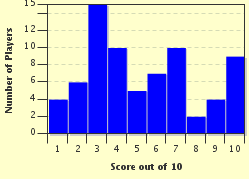Quiz Answer Key and Fun Facts
1. The facial nerve arises from the junction of the pons and medulla oblongata in the brainstem. Which cranial nerve is it?
2. Through which bone (or part of bone) does the facial nerve travel within the internal auditory meatus?
3. What is the name of the canal that contains the labyrinthine, tympanic and mastoidal segments of the facial nerve and its two genua (bends)?
4. Through which foramen does the facial nerve exit the skull and enter the parotid gland, where it divides into five branches?
5. Does the facial nerve supply the parotid gland?
6. The facial nerve forms or contributes to several ganglia (swellings of neuronal cell bodies) along its course. Which of these is NOT one of those?
7. The facial nerve supplies the muscles of facial expression, also called the mimetic muscles. Which of these is NOT one of those muscles, and is thus not supplied by the facial nerve?
8. Which branch of the facial nerve lies beneath the platysma muscle for much of its course?
9. Within the pons, which blood vessel primarily supplies the facial nerve?
10. What is the diagnosis given when dysfunction of the facial nerve causes facial paralysis without any determinable cause?
Source: Author
reeshy
This quiz was reviewed by FunTrivia editor
gtho4 before going online.
Any errors found in FunTrivia content are routinely corrected through our feedback system.

